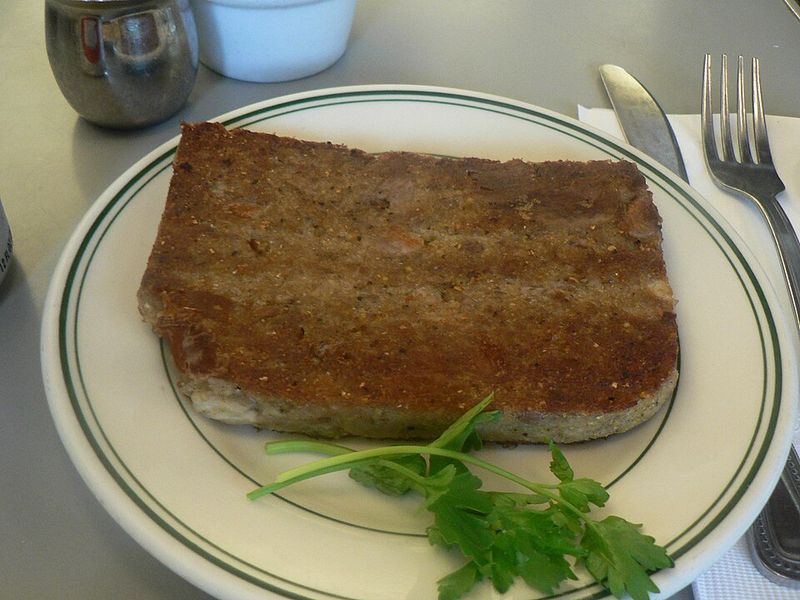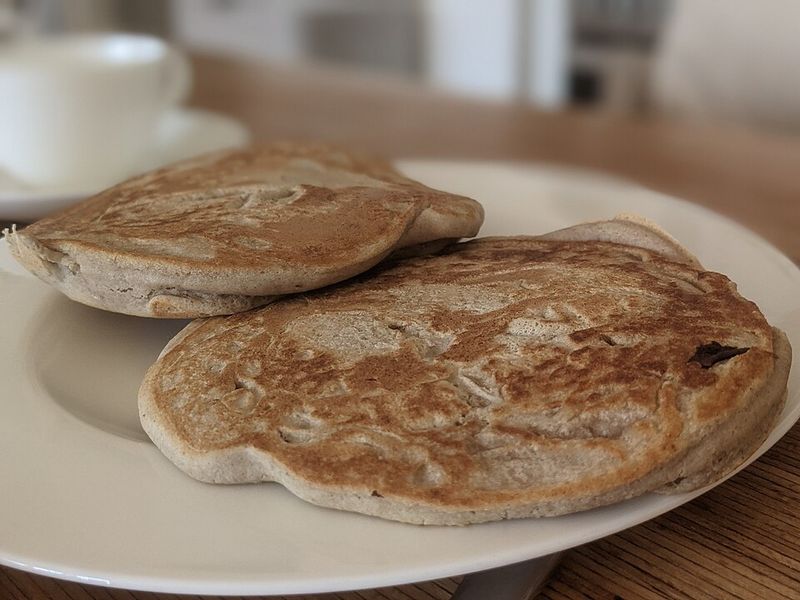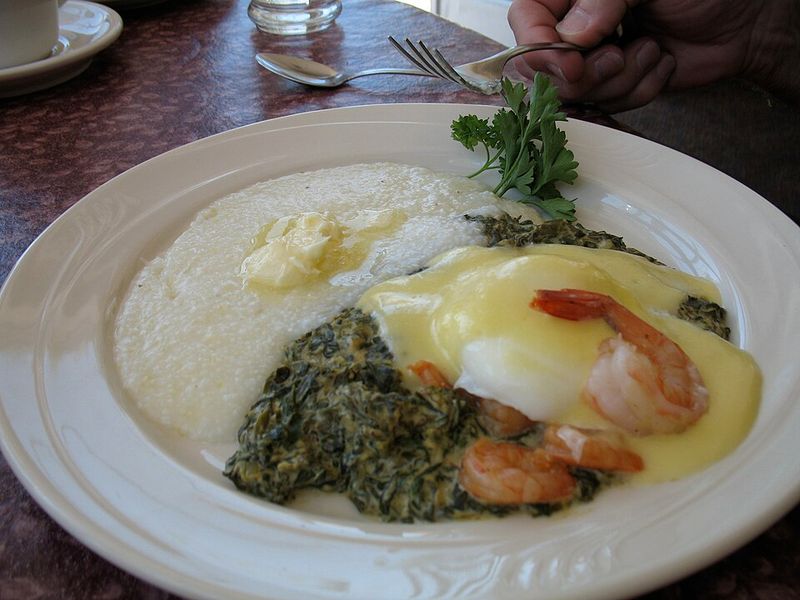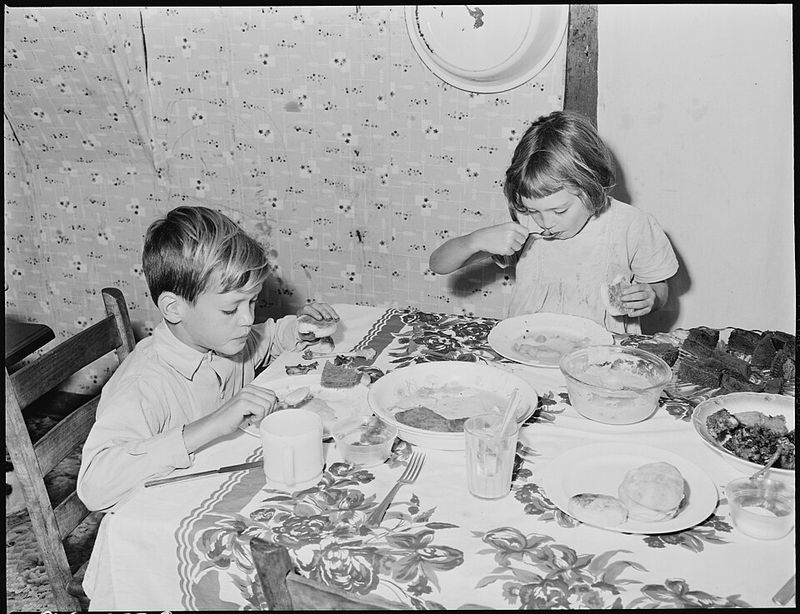Before breakfast sandwiches and drive-thru lattes, Americans started their mornings with hearty, homemade meals. From cornmeal mush to chipped beef on toast, your grandparents’ breakfast table was built for long workdays – not quick commutes. These forgotten dishes tell the story of an America that ran on comfort, creativity, and a whole lot of butter.
1. Cornmeal Mush
Before instant oatmeal, there was cornmeal mush – a simple porridge made from boiled cornmeal and water or milk. Grandparents often ate it hot with butter and syrup in the morning, then fried leftovers into golden slices for supper. It was especially common in the Midwest and Appalachia, where corn was plentiful and budgets were tight. Cornmeal mush dates back to early settlers and remains a comfort food for those who grew up with it. Think of it as America’s answer to Italian polenta.
2. Scrapple
A beloved Pennsylvania Dutch creation, scrapple is a breakfast meat made from pork scraps mixed with cornmeal and spices, then shaped into loaves and pan-fried until crisp. It was born from the “waste not, want not” philosophy of early settlers. Served with eggs or drizzled with maple syrup, scrapple offered protein-packed comfort on cold mornings. Though it’s fallen out of favor nationally, you can still find it in parts of Pennsylvania, Delaware, and Maryland – especially in Amish country diners.
3. Buckwheat Pancakes
Before the rise of fluffy white flapjacks, hearty buckwheat pancakes ruled the breakfast table. Their nutty, earthy flavor made them a cold-weather favorite, especially in rural regions where buckwheat flour was common. Often cooked on cast-iron griddles and served with molasses instead of syrup, these pancakes were dense, filling, and packed with fiber. Many grandparents remember them as the taste of winter mornings before school – or after Sunday church.
4. Poached Eggs on Creamed Spinach
While it sounds fancy, this dish was a thrifty way to make eggs feel special. Canned or fresh spinach was simmered in cream sauce, seasoned with nutmeg, and topped with poached eggs. It appeared in 1940s and ’50s cookbooks as a “nourishing” breakfast for growing children. The recipe combined two inexpensive proteins – eggs and greens – and offered an elegant presentation at a time when homemakers took pride in breakfast served on proper plates.
5. Codfish Cakes
New England families often started the day with codfish cakes – salted cod mixed with mashed potatoes and fried into crisp patties. Paired with baked beans or eggs, they were hearty and high in protein. The dish traces back to Colonial times but remained popular through the 1950s, especially in coastal towns. While few Americans eat fish for breakfast today, cod cakes were once a proud sign of thrift and tradition.
6. Fried Apples and Biscuits
A Southern classic, fried apples with biscuits offered sweetness before sugary cereals ever hit shelves. Apples were sliced and cooked down with butter, sugar, and cinnamon until caramelized, then spooned over warm, flaky biscuits. It was simple, inexpensive, and used up fruit that was past its prime. This cozy combination often doubled as dessert or breakfast-on-the-go for farm families. Today, you’ll still spot it on menus in old-fashioned diners and Appalachian bed-and-breakfasts.
7. Creamed Chipped Beef on Toast (“SOS”)
Known affectionately (or not) as “SOS” during WWII, creamed chipped beef on toast was a savory staple for soldiers and civilians alike. Dried beef slices were simmered in a thick white gravy made from butter, milk, and flour, then ladled over toast. Cheap, filling, and salty, it transitioned from army mess halls to American kitchens in the 1940s and ’50s. Many families served it on weekends with black coffee or eggs. You can still find it in a few diners across Pennsylvania and the Midwest.
8. A Bite of the Past
Your grandparents’ breakfasts weren’t fancy, but they were full of care – and calories to power real labor. While most of these dishes have disappeared from American tables, they’re making a quiet comeback among nostalgic home cooks. Maybe it’s time to trade that protein bar for a plate of creamed chipped beef and remember what breakfast used to be.












